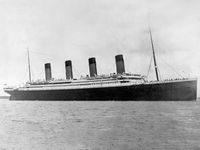Stephen J. Elledge
Our editors will review what you’ve submitted and determine whether to revise the article.
- In full:
- Stephen Joseph Elledge
- Subjects Of Study:
- DNA
- DNA repair
- cancer
- gene
Stephen J. Elledge (born August 7, 1956, Paris, Illinois, U.S.) American geneticist known for his discoveries of genes involved in cell-cycle regulation and DNA repair. Elledge’s elucidation of the genetic controls guiding those processes enabled critical insight into common molecular mechanisms of cancer development, opening up new opportunities in cancer therapeutics.
Education and early studies of DNA repair
Elledge was interested in chemistry from a young age, and in 1978 he earned a bachelor’s degree in chemistry from the University of Illinois at Urbana–Champaign. During the final years of his undergraduate studies, he became fascinated with DNA and the molecular interactions that take place within cells. For his graduate studies at the Massachusetts Institute of Technology (MIT), he focused on biology. His thesis work centred on a phenomenon in bacteria known as SOS mutagenesis, in which genes activated by extensive DNA damage (such as that caused by irradiation with ultraviolet light) repair DNA in order to promote cell survival and in the process increase the rate of mutation. In the early 1980s Elledge successfully cloned and identified an essential component of the error-prone SOS response, a DNA sequence known as umuDC. Elledge’s discovery of umuDC was made possible by his invention of a novel cloning tool known as a phasmid vector (carrier), which greatly expedited the study of cellular protein-protein interactions.

After Elledge completed his doctoral studies at MIT in 1983, he went to Stanford University, where, while working as a postdoctoral fellow, he began investigating the cell cycle in eukaryotes (the cell cycle is the sequence of events that prepares a cell for division). In a search for eukaryotic genes involved in homologous recombination—a mechanism that allows for DNA exchange between closely matched sequences (and, hence, relatively error-free DNA repair)—he serendipitously discovered the gene that encodes an enzyme known as ribonucleotide reductase (RNR). At the time, RNR was known only to catalyze the production of nucleotides for DNA synthesis. Elledge was able to show, however, that the enzyme is also active in DNA repair, a finding that proved fundamental to the later discovery of mechanisms of cell-cycle regulation in yeast and other organisms.
Elucidation of the DNA-damage response
In 1989 Elledge became an assistant professor in biochemistry at Baylor College of Medicine in Houston, Texas. While there, he demonstrated that a yeast enzyme called Dun1 (DNA-damage uninducible 1) plays a crucial role in signal transduction in the DNA-damage response. He subsequently began to search for similar counterparts in mammalian cells and applied his phasmid vector cloning method to generate a collection of human DNA sequences that could be expressed in yeast cells. That work led to his isolation of a gene known as cdk2 (cyclin-dependent kinase 2). In a series of experiments, he showed that cdk2 helps control the cell cycle at the G1/S-phase transition (the transition in the cycle between the first growth phase and the DNA synthesis stage), and he identified cdk2 inhibitors in both yeast and human cells, including inhibitors encoded by genes known as p21 and p57. Elledge demonstrated that such cdk2 inhibitors serve as cell-cycle checkpoints and thus, when mutated, facilitate uncontrolled cell growth and tumour formation.
In the mid-1990s, as Elledge continued to search for human genes that regulate the cell cycle, he discovered a domain within proteins called the F-box motif. He found that the F-box occurs specifically within proteolytic (protein-degradation) complexes, where it helps to protect the cell cycle from mutated proteins. He continued to study F-box proteins and cell-cycle genes in the early 2000s, joining the Harvard Medical School and Brigham and Women’s Hospital in 2003 as a professor of genetics. There he built on his previous studies of mammalian DNA-damage response proteins known as ATM and ATR, which induce cell-cycle arrest, allowing time for DNA repair. Elledge discovered that ATM and ATR are capable of interacting with hundreds of other proteins to effect an array of DNA-damage responses. The work provided insight into the development of new therapeutic approaches in cancer, whereby further increasing the extent of DNA damage in cancer cells via ATM or ATR inhibition potentially increases the cells’ susceptibility to the killing effects of other chemotherapeutic agents delivered in combination with the inhibitors.
Awards and honours
Elledge received numerous awards and honours throughout his career, including the Lewis S. Rosenstiel Award for Distinguished Work in Basic Medical Science (2012), the Canada Gairdner International Award (2013), and the Albert Lasker Basic Medical Research Award (2015). He was a Howard Hughes Medical Institute investigator (from 1993) and a member of the U.S. National Academy of Sciences.















